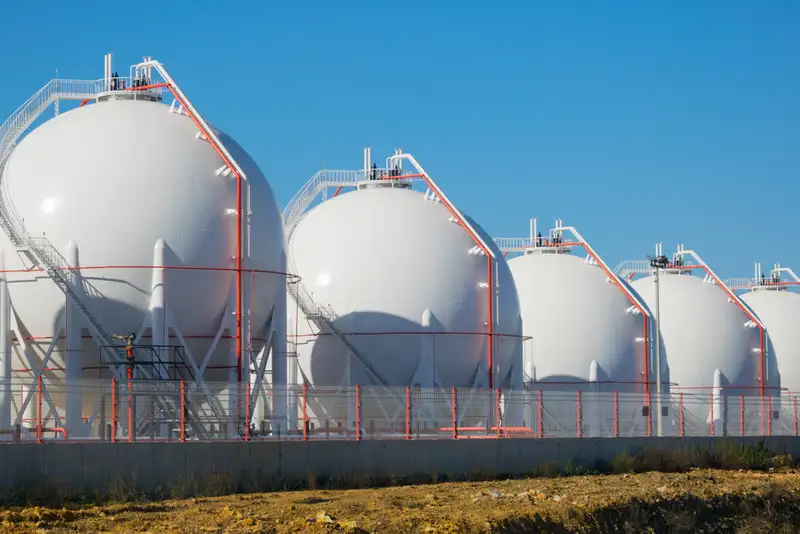The purpose of stainless steel tank insulation is thermal protection and temperature control for the contents inside the tank. This is a common requirement for many industries involved in processing, storing or transporting fluids. In this article, we examine the methods used to insulate stainless tanks.
Advantages of insulating stainless tanks
The purpose of stainless steel tank insulation is thermal protection and temperature control for the contents inside the tank. Here are the main goals of insulation:
Temperature stabilization
The insulation helps maintain the optimal temperature of the contents inside the stainless steel tank. It acts as a barrier that reduces heat transfer between the tank and its surroundings and minimizes heat loss or gain. Insulation helps stabilize the internal temperature and ensures that the contents stay at the desired temperature for longer.
energy efficiency
By reducing heat transfer, insulation improves energy efficiency by minimizing the need for excessive heating or cooling of tank contents. Insulated stainless steel tanks require less energy to maintain the desired temperature, resulting in lower energy consumption and associated costs.
Chemical stability
Insulation helps stabilize processes that rely on maintaining specific temperatures. Industries such as food processing, pharmaceuticals, chemical manufacturing, and other industries often require precise temperature control for their products or processes. Insulated tanks help ensure consistent and controlled conditions, leading to improved product quality and process efficiency.
Density control
Insulation helps control condensation on the surface of the tank. When there is a significant temperature difference between the tank and the surrounding environment, moisture can condense on the surface of the cold tank. Insulation acts as a thermal barrier, minimizing temperature differences and reducing the possibility of condensation, which can lead to corrosion or other issues.
Equipment protection
Insulation also helps protect the stainless steel tank from external environmental conditions. By reducing temperature fluctuations and potential condensation, insulation can prevent moisture-induced corrosion, extend the life of the tank, and maintain its structural integrity.
Stainless steel tank insulation provides thermal insulation, temperature stability, energy efficiency, frost protection, condensation control and overall protection of the tank and its contents. This is an essential measure to ensure optimal performance and longevity in various industrial, commercial and residential applications.
Tank insulation methods
There are several common methods for insulating stainless steel tanks. The choice of insulation method depends on factors such as desired insulation thickness, operating temperature, moisture protection requirements, and specific application. Here are some of the most commonly used methods:
Foam spray insulation
Spray foam insulation involves applying a liquid foam insulation material, usually polyurethane or polyisocyanurate, to the surface of the tank. The foam expands and hardens to form a continuous, seamless layer of insulation. Spray foam provides excellent thermal insulation, moisture resistance, and can conform to irregular shapes or surfaces.
Insulation blankets
Insulation blankets are insulating panels or prefabricated blankets made of materials such as fiberglass, mineral wool or porous foams. They are custom installed and secured around the tank using straps, hooks or fasteners. Insulation blankets are suitable for tanks that require removable or reusable insulation and are effective in providing thermal insulation.
Insulation plates or panels
Insulation boards or panels are rigid insulating materials, such as expanded polystyrene (EPS), extruded polystyrene (XPS) or mineral wool, cut to size and attached to the surface of the tank using glue or mechanical fasteners. They stick They are often used for larger tanks or where a constant thickness of insulation is required.
Insulation covers
Insulation coatings involve applying a specialized coating material to the surface of the tank to provide both insulating and protective properties. These coatings are usually based on elastomer or ceramic and have thermal insulation, corrosion resistance and waterproof capabilities.
Insulation covers
Insulation covers consist of layers of insulating material such as fiberglass or mineral wool that are wrapped around the tank and secured with tape or adhesive tape. Insulation covers are usually used for smaller tanks or where cost-effective and easy installation is desired.
Vacuum Insulation Panels (VIP)
High-performance insulation panels use a vacuum to remove air and gas between layers, reducing heat transfer through conduction and convection. have excellent thermal insulation properties with thin profiles that make them suitable for applications where space is limited.
It is important to note that the suitability of any insulation method depends on the specific needs of the stainless steel tank, including operating conditions, desired insulation performance, budget constraints, and installation feasibility.
Petrosazeh Beinolmelal Aram Co operates with two decades of brilliant experience in the field of designing, manufacturing, implementing and operating fixed equipment such as pressurized spherical tanks, cylindrical tanks, towers, condensers, flares, etc. Contact us for technical and engineering advice.


